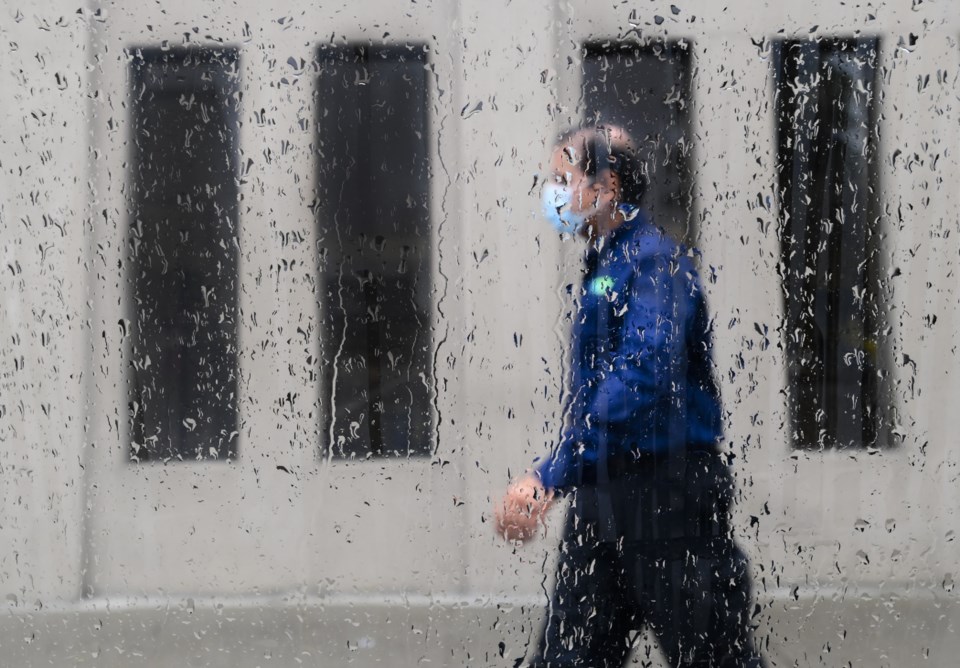A Statistics Canada study has found that some racialized populations in Canada had significantly higher mortality rates from COVID-19.Â
The analysis says the COVID-19 death rate was much higher for racialized people compared to non-racialized people. It found 31 deaths per 100,000 for racialized people and 22 deaths per 100,000 for the non-racialized population.
"It confirms what a lot of us had believed, how COVID has basically targeted racialized people," said Dr. Anna Banerji, an infectious disease specialist and a professor at the Dalla Lana School of Public Health at the University of Toronto.
Black people had the highest mortality rate — more than two times higher than non-racialized residents. That was followed by those who identify as South Asians and Chinese.Â
However, those who were Chinese had a similar mortality rate to non-racialized people.
The study estimated COVID-19 mortality rates in Canada in 2020 and compared them with newly released census data from 2016. Only South Asian, Chinese and Black people were analyzed due to sample size restrictions, the study said.Â
Nicole Aitken, an analyst with Statistics Canada in Ottawa, said the findings were limited because researchers did not have data on people living in care homes or other institutional living arrangements. In the early stage of the pandemic, there were deadly outbreaks in care homes across the country.
The study also did not include the effect of COVID-19 vaccines, which were widely distributed starting in 2021.Â
The study found that across the Canadian population, men had higher mortality rates, but Black men were the highest at 62 deaths per 100,000 people. Black women also had a much higher mortality than their non-racialized counterparts.Â
Chinese women had the lowest mortality rate at 16 deaths per 100,000 people.Â
The study also explored the effects of being low income on the mortality rate for racialized people after accounting for other risk factors such as age, sex and housing type.Â
The study found a person’s socioeconomic situation played a role in COVID-19 deaths for all populations, except Chinese people.Â
"The rate for the Black people who were living in low income were almost three times higher compared to the Black people not living in low income," Aitken said.Â
"So this group … seems to be in a lot more vulnerable situation than some of the other populations in Canada."
People in low income, overcrowded housing and apartments had higher odds of dying from COVID-19.Â
Banerji said it's clear that a lot of racialized people are at increased risk due to poverty and underlying disease. She added that a lot of them were also in front-line, low-paying jobs where they were unable to stay at home or take sick days.
"This kind of data helps us with public health policy that recognizes the disparity and tries to address it," she said.Â
David Fisman, a professor of epidemiology at the University of Toronto, said it is important race and ethnicity are taken seriously as factors in people's health. He said that data hasn't been available in Canada until recently.Â
"There's this interaction between Black race-ethnicity in Canada and low income that is just deadly to people," Fisman said.Â
"When you have Black race-ethnicity and you are also impoverished, that seems to confer a tremendously high risk."
The study said its findings were consistent with others conducted in the United States and elsewhere which found more severe outcomes among racialized populations.Â
A study commissioned by the Black Coalition Against COVID in the U.S. found rates of infection, hospitalization and death were highest among Black Americans. That study said it was a result of structural and societal realities, including working front-line jobs, living in multi-generational homes and in more populated areas. Health inequalities, including higher rates of diabetes and chronic kidney disease, as well as racism and bias within the health-care system also play a role, that study said.Â
The Statistics Canada study said the relationship between low income, racialized populations and COVID-19 mortality could be explained by "multiple pathways." Low income, unsuitable housing and less access to preventive health care can increase risk.
Fisman said the results may not be surprising for people who saw mass spreading of the virus in low-income neighbourhoods or at work places that are poorly ventilated.Â
He said it shows how clean indoor air is an important health equity issue.Â
"It's getting easier and easier to see what the mechanisms are that are driving these disparities," he said. "A lot of it simply relates to where people live and work and spend time indoors."
The study did not analyze the effect of COVID-19 on Indigenous people due to data limitations.
Race-based COVID-19 data released in Manitoba last year showed Indigenous people made up 17 per cent of COVID-19 infections, despite making up 13 per cent of the provincial population. The First Nations COVID-19 task force in the province found much higher rates of severe outcomes and death among that population throughout the pandemic.Â
This report by The Canadian Press was first published Aug. 30, 2022.Â
Kelly Geraldine Malone, The Canadian Press



